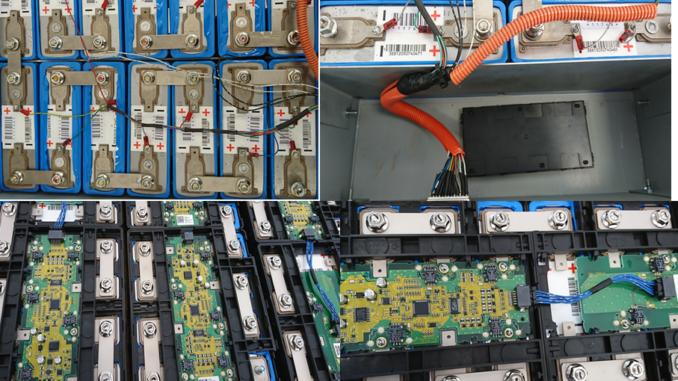
In La Tribune 13/12/2019
A recent conference in Kedge Bordeaux was an opportunity to review the fake-news of « rare metals », but also to specify that the disorder maintained between the notions of lanthanides (or rare earths) and the unfortunate expression of « rare metals » added to the confusion of minds, especially in the political world. The last illustration was the presentation by European deputy Karima Delli at the « Paris City Life 2019 » forum: denouncing the apparent inertia of automobile manufacturers, she was inadvertently a victim of this infox.
These hoaxes, such as a metal conflict initiated by China, or mine closures outside China caused by Beijing, or even those of future metal embargoes, have contaminated electric vehicles’ field. They claim that in this industry, green cars carry « red » batteries containing either mountains of rare earths or conflict metals, but also that these batteries are not recyclable, and the show will probably goes on.
Influencing consumer minds
This concert of fake-news, maintained by a raspy mystification in order to mark consumers’ minds, caused the electric car industry in Europe to lag behind Asia significantly, while at the same time diesel and gasoline engines continued to technically progress towards cleaner engines. From now on, it is in fashion to oppose the cleanliness of electricity to the cleanliness of diesel. However, these measures, sometimes dated, are often based on old situations that do not take into account progress in metal production. Nevertheless, the next European directive on car pollution, which will go from the pit or mine to the wheel and even to recycling, will probably recognise that electric cars emit on average 30% less CO² than conventional vehicles.
Naturally, this ratio improves when the electricity consumed is decarbonized as in France and deteriorates in other coal-fired countries. The analysis of electric mobility is therefore a variable geometry and that is why some predict that, in order to average their car ranges, manufacturers will initially multiply hybrid models rather than 100% electric models. This is why the Airbus of battery, which has just been made a reality with the agreement of public subsidies by Brussels, will therefore have to first fight the imposture of the infox which has become a real handicap to electric mobility, and only then propose the most cost-effective electric solutions possible.
Given this liability, it is therefore not surprising that the metals used in electric vehicle batteries, whose demand was announced stratospheric by corrupt spirits, did not see their increasing supply meet by equipollent demand.
Fall in lithium prices
As a result, lithium, which peaked at around $23,000 per tonne in 2016 and 2017, is expected to reach around $5,000 per tonne in early 2020; non-economic production sites will be closed and it may be difficult to redeploy them later.
Cobalt prices, which peaked at $95,000 per tonne in 2018, are trading at $34,000 per tonne. They have probably reached the bottom of the shaft, as the world’s largest mines are reducing production or stopping, and the world’s largest producer, Glencore, under investigation by the US and then English courts, has entered an area of organized destabilization of which some Washington services have the secret. However, following the 2018 crisis, the consumption trajectory diverged towards substitution and a reduction in the amount of cobalt consumed. The overall picture is dynamic and it is therefore difficult to predict whether prices will return to past zenithal orbits.
Manganese consumption in batteries is insignificant, less than 3% of demand. Following an increase in extractions in Ghana, global production was not yet rebalanced by a reduction in South African production that may follow electricity shortages in that country’s mining operations. As a result, after two very good years in 2017 and 2018, prices fell dangerously from $9 to $4 in 2019. They are expected to be even lower in 2020.
Nickel market was not exceptionally buoyant in 2019. After almost doubling following a small 6-month speculation linked to the infox of the electric car and the inconsistencies of unwise consumers, prices fell again. Hidden metal stocks remain high, some have disappeared in strange places: Gulf countries, Chinese consumers, but also investors.
Nickel-free or even lithium-free batteries
However, since nickel is the metal that is expected to benefit most from the growth of new generations of nickel-manganese-cobalt batteries, some predict very optimistic prices. But it seems that the devil’s metal’s past is working against it and that generations of nickel-free or even lithium-free batteries have already passed the prototype stage. The question for nickel is a vetero-testamentary one: should it abandon an old friend, stainless steel, for a new, less reliable companion, batteries?
As everyone can see, « rare metals » do not exist. For electric vehicles, on the contrary, they are abundant if they have been researched, discovered, transformed and recycled. They would become sensitive if one of the previous steps were to fail and there is no longer a balance between supply and demand, but this is usually of short period of time. They will be critical if there are high risks of deficit without known substitution. Finally, they are strategic if the State declares them essential to one of its policies, such as the Airbus of battery, or to its sovereign missions. In the latter case, far from geology, just because they are strategic does not mean that the prices of these metals will be high, on the contrary, like for uranium, a French strategic metal, provided that supply and demand are in balance, their prices will remain at acceptable levels.